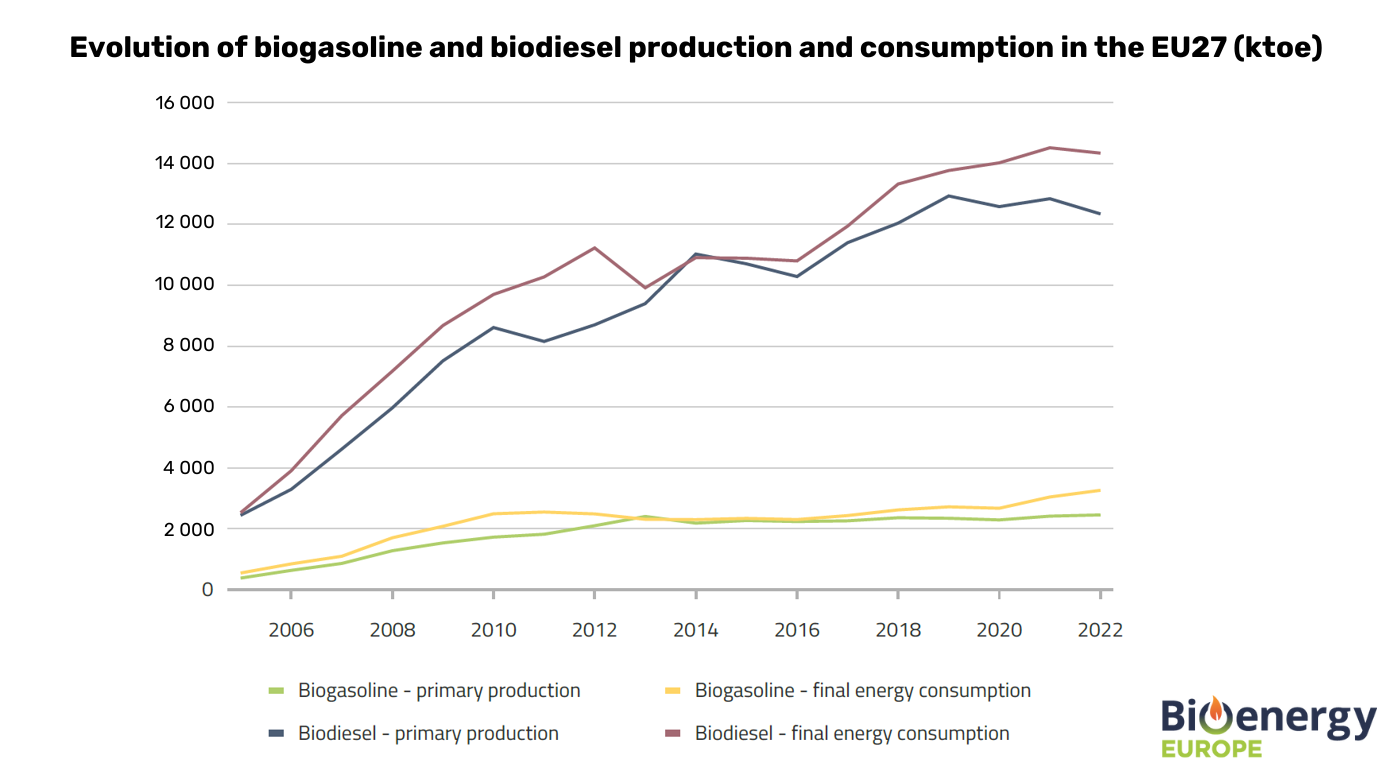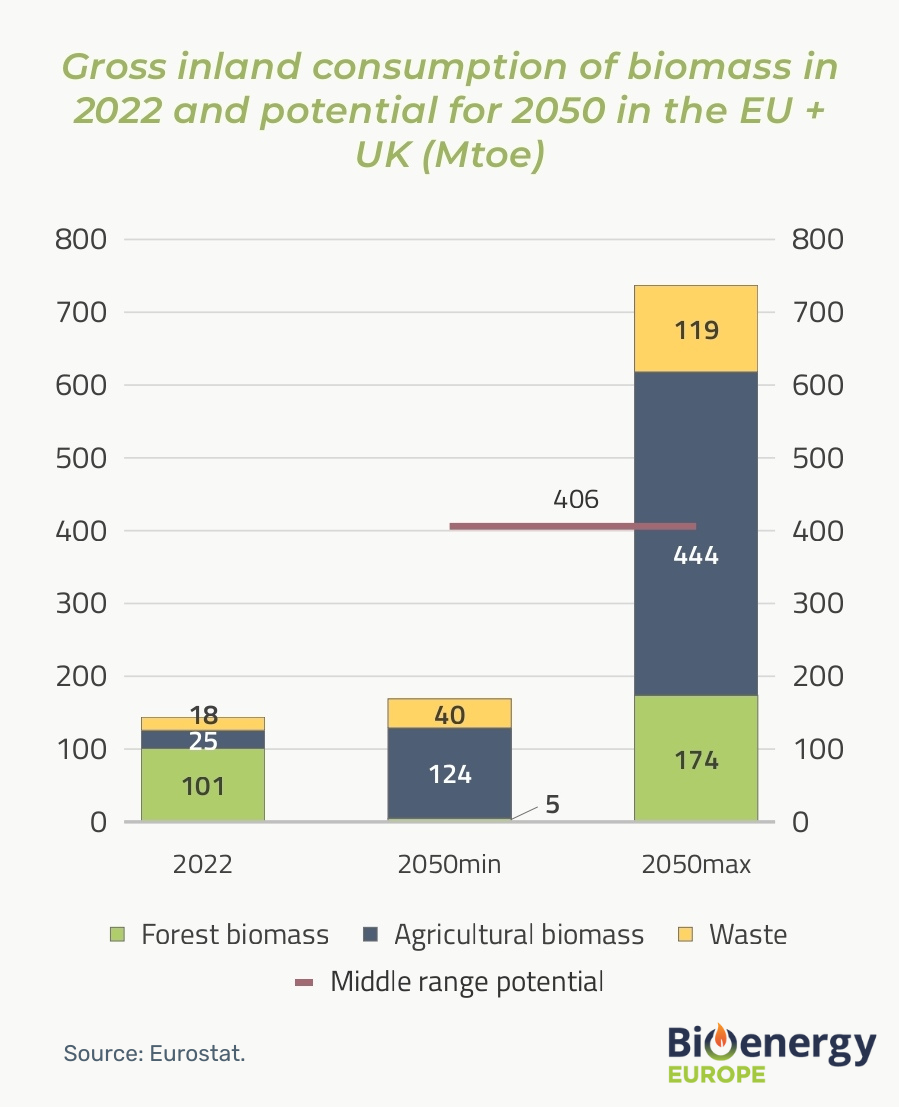Biofuels, biogas and the contribution of bioenergy to the socio-economic indicators of Europe
In 2022, biofuels accounted for 4.8% of energy consumption in transport, while electricity accounted for 1.5%. In 2023, Europe produced a record 22 billion cubic meters of biogas. Biomethane production reached 4.9 billion cubic meters.
For the SAF platform, our expert Semen Drahniev has prepared an overview on the new statistical report Bioenergy Landscape 2024 by The Bioenergy Europe.
As a reminder, this review is logically divided into three parts. We are currently publishing the third and final part. Parts one and two are already available for viewing on the SAF platform. In this article, we will look at the state of the biofuel, biogas and biomass supply sectors, as well as the socio-economic contribution of the bioenergy sector.
Biofuels
Biofuels play a crucial role in the decarbonization of the EU transport sector, where almost 94% of energy consumption is based on fossil fuels (2022 data: 92.8% oil and oil products and 0.9% natural gas). In 2022, electricity consumption in transport amounted to 5471 ktoe, while biofuels reached 17140 ktoe.

Compliant biofuels are classified by the EU into two main categories based the type of material used to produce them and therefore the fuels they can be blended with: biodiesel and biogasoline. The consumption of compliant biofuels has grown significantly over the past years, with an impressive 400% increase between 2005 and 2022.
The biogas sector
Biogas stands as a crucial renewable energy source, increasingly contributing to Europe’s shift toward a low-carbon energy system and circular economy. Through an upgrading process, biogas can then be further refined into biomethane, a gas compatible with existing natural gas infrastructure. This compatibility arises from the similarities in chemical composition (predominantly methane) and energy content between biomethane and natural gas, allowing biomethane to serve as an effective alternative for heat, electricity, and transport fuel.
Since 2009, the total number of biogas plants has increased steadily, starting from 7.634 in 2009 and reaching 20.814 in 2022. This growth represents the growing support and investment in renewable energy in the EU. By early 2024, installed capacity for biomethane stood at 6,4 bcm/year, underscoring the sector’s rapid expansion.

Biomass
Current evaluations estimate that Europe’s biomass supply potential for energy production by 2050 could range between 169 and 737 Mtoe.
A review of available literature suggests that, under optimal conditions and accounting for technical limitations like cost, a cumulative mobilization of biomass resources may yield up to 406 Mtoe by 2050.
The Socio-Economic Contribution
The bioenergy sector plays a pivotal role in driving the socio-economic development of the EU27. With close to a million jobs in 2019 in the EU, the bioenergy sector is by far the largest job creator of all renewables. With the ongoing energy transition, this figure is projected to increase and reach more than 1,5 million jobs by 2050.
Unlike other renewables reliant on imports, bioenergy enhances energy security while contributing €40 billion to the EU’s GDP in 2019, a figure set to reach €70 billion by 2050.
Read the full article on the SAF platform.
We remind you that UABIO is a partner of the Sustainable agribusiness platform (SAF).
SAF is a communication platform that brings together agribusiness stakeholders and aims to establish strong links between market players and introduce sustainable approaches in agriculture. For this platform, our team prepares verified professional content on the bioenergy sector.


